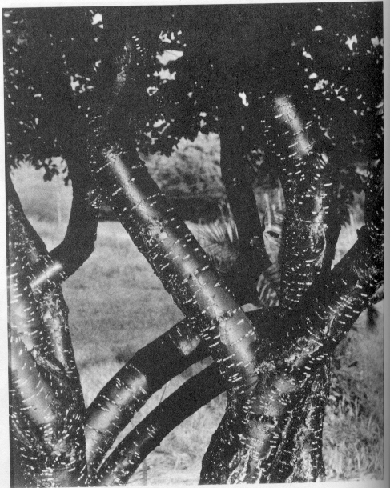from Bram Dijkstra's Cubism, Stieglitz, and the Early Poetry of William Carlos Williams (1969):
The kind of approach to art Stieglitz developed in his photographs, and helped to foster in the artists associated with him, was based on his belief in sharply focused photography. As has been already pointed out, he recognizcd from the very first that the camera's primary merit was that it was capable of reproducing reality with absolute fidelity. But because the camera will record all things without discrimination, it is in itself no more a source
of art than is paint. A painter can use his materials very much in whatever way he wants; the creative process to which be is committed is not limited in time or space: if be so wishes he can spend years on a single painting. He can therefore afford to analyze his subject while be is painting. But an unretouched photograph is the record of a moment, its image is fixed in an instant of time. Stieglitz therefore argued that it is the photographer's role to seize the moment in terms of its most opportune structure. He must select the single image which will represent the object under his scrutiny most effectively. The photographer, therefore, more than any other artist, must be perfectly alert to the materials of the visible world. He is entirely dependent on what exists to the eye; he must see, before he can create. He must, before all, in the most literal sense of the word, be a seer. Stieglitz probably became aware of these implications of photography when he began to use the "snapshot" camera with which he took his earliest pictures of New York. This discovery influenced his approach to the world in an absolute sense, creating the laws on which his further artistic life was based: "The moment dictates for me what I must do," he said. "I have no theory about what the moment should bring. . . . I simply react to the moment.... I am the moment."" The materials of the "living moment" are the things seen. "Beauty is the universal seen," be emphasized, and "in one's way of seeing lies one's way of action."" The basis for all that is meaningful in life is man's capacity to see the objective world. "I detest," Stieglitz said, "superstitions that go against life, against truth, against the reality of experience, against the spontaneous living out of the sense of wonder -of fresh experience, freshley seen and communicated.""'
Alfred Stieglitz, Dancing Trees (1921) [click above for a larger image] Very early Stieglitz discovered that a photographer must not only be capable of seeing sharply and precisely in order to capture the living moment, but must be unusually selective as well. A photograph representing a complex scene can be effective, but most often the larger the number of objects depicted, the more diffuse the impact of the picture. Hence Stieglitz progressively reduced the visual field presented-by his photographs.
It was Stieglitz who, for Williams as well as for the painters, provided the essential example of the means by which the artist could reach out to a new, more accurate mode of representing the world of experience. If Stieglitz was a pioneer in American art, it was primarily because he established the basis for a non-metaphoric art in America. Until Stieglitz began to emphasize the object in his photographs, the artists in this country had been overwhelmingly concerned only with those qualities in reality which were representative of indirect experience.
